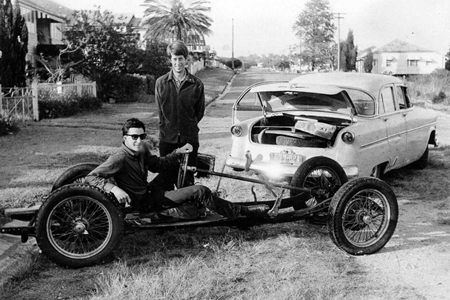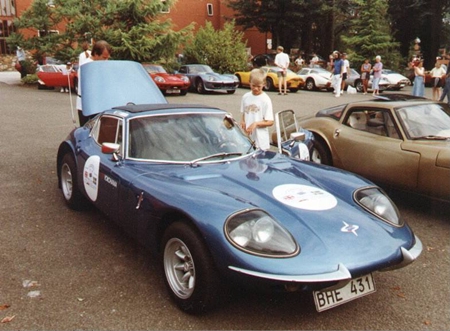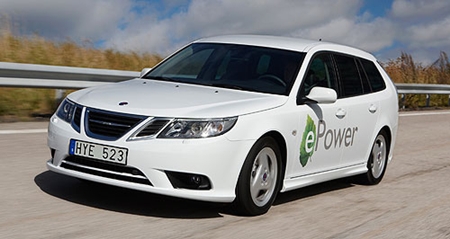 |
|
 |
| AUTO MANIA:
by Dr. Iain Corness |
|
|
|

What did we learn from the European GP?
Well, we learned that it isn’t over until it’s over! The
podium with Fernando Alonso (Ferrari), followed by Raikkonen (“Lotus”) and
Schumacher (Mercedes) was an incredible result that could not have been
predicted, even at mid-distance. It also showed the depth of the influence
of Ferrari, with all three drivers world champions, one a current Ferrari
driver and the other two ex-Ferrari champions.
Contrary to previous Grands Prix at the Valencia track,
there was a feast of overtaking, with most of the overtaking moves not
produced by the artificial DRS boost. With the example being given by some
of the younger drivers in the field who are not afraid to risk all in a
passing maneuver, the drivers began to push and find their way around the
cars in front. However, not all moves were successful, and some were just
hopelessly optimistic. The aggressive nature of the racing in lower formulae
such as GP2 (or Touring cars) is now the norm in F1 it seems. Vergne (Toro
Rosso) driving into Kovalainen (Caterham), Maldonado (Williams) into
Hamilton (McLaren), Kobayashi (Sauber) into Senna (Williams) and again into
Massa (Ferrari). There were more, but that is enough to show just how F1 has
changed from a competition between gentlemen drivers to a scrum of rugby
league front rowers.
I have always considered car electrics (and now
electronics) a black art, and undoubtedly both Vettel (Red Bull) and
Grosjean (“Lotus”) would agree with me. Both sailing along, well within
themselves and their cars and suddenly the fire goes out and their race is
over. Up till that point, Vettel was getting his infamous finger ready and
Grosjean was singing the Marsellaise. It would have certainly been a podium
for the Frenchman, who has shown an amazing improvement this year, despite
his DNF’s earlier in the season. At this stage their failures are being put
down to alternator problems. Are they both running Lucas, I wonder?
Returning to the winner Fernando Alonso, he has become
today’s answer to ‘The Professor’ Alain Prost. He has matured into a very
clever and talented competitor and a long way from the sulky Spaniard of a
few years ago. While it is obvious that his win was assisted by Vettel’s
electrical woes, nevertheless he deserved the win, having not let up for the
entire race distance.
Michael Schumacher’s third place was an overdue podium.
He has now become the second oldest driver to stand on the podium since
Black Jack Brabham about 40 years ago. While that may be so, let us not
forget that Juan Manuel Fangio was 45 years old when he was winning world
championships, driving very difficult race cars in Grands Prix lasting three
hours. And they didn’t spend their time hitting other drivers off the track.
Nor did they spend their time nursing tyres which only last 10 laps, but got
on with the job of “racing”.
Mark Webber (Red Bull) had an amazing race after a
diabolical qualifying which left him 19th on the grid,
to eventually finish fourth. The Aussie is now second in the world
championship table after Alonso.
It was an exciting GP, even though part of the closeness
in running has been produced by ‘artificial’ means such as degrading tyres,
DRS and KERS. However, as much as the enthusiasts yearn for the competitive
driving of the days of yore, I think we have to accept that the new order is
here and is not going to change in a hurry.
|
|
 |
More nostalgia!

What we did 50 years ago
One of my old flatmates of 50 years ago (time flies when you
are in Pattaya and having fun) sent the attached photo up to me. The year is
1963, the remains of a car I am sitting on is a 1948 MG TC, and the tow car was
my $50 1953 side valve V8 Ford Customline, driven by a mate, Roger Prior, who
these days is a respected academic in Canada. The location was suburban
Brisbane, Queensland, Australia. We towed the chassis home, with the partially
operative handbrake being the only device for retardation. You look at photos
like that and you wonder just how did we get away with it.
|

|
Autotrivia Quiz
Last week I stated that the assembly line style of mass
production and interchangeable parts was not pioneered by Henry Ford. I asked
what industry did this first? It was the gun manufacturers and notably
Springfield Armory with Thomas Blanchard who pioneered interchangeable parts.
So to this week. The Americans were much in advance of the F1
circus as far as some safety features were concerned. In late 60’s F1 caught up
with one safety feature. What was it?
For the Automania free beer this week, be the first correct
answer to email [email protected]
|

|
The Editor at Large looks at life

Marcos circa 1969.
Automania’s Editor at Large is John Weinthal who recently
turned 72 (he’s always been older than me)! As a celebration (?) he sent the
following article in. I believe that anyone older than 50 will agree with
some/all of his points below:
I really quite enjoy being 72, but it pays for me not to
pretend that I am somehow different ... Truth is I am just as crotchety as the
next guy a lot of the time and while I certainly look to the future rather than
the past - not all that is gone was wrong and not all that is new is an advance.
In the Automotive sphere.
I pine for round headlamps (and tail lights unless
imaginative like first Murano and original Maserati 3200 GT).
I want key start.
I would like to see a modern interpretation of column
auto-change allowing for three abreast front seating.
Oddly, some might say, I am happy with foot-operated
‘handbrake’ - emergency or parking brake if you get my drift.
I generally prefer minimum 50 profile tyres.
I still like manual gears - the more the merrier.
I hate touch screens - on phones and sat nav etc in cars.
I believe ‘hands free’ is every bit as dangerous as hand-held
while driving - the distraction of chat with someone who is blind to the
challenges you are facing on the road is the danger, not one-hand driving.
I do not want a reversing camera (I wrote this a long while
ago before I bought Optima which has one - not essential but can be handy).
I believe all learner drivers should have minimum 30 minutes
experience on skid pan.
I like rear opening doors - front and rear.
I dislike dark tinted windows, especially front and front
side.
I have a general preference for British cars - most Bentley,
pre-Phantom R-R, Jaguar, McLaren, Aston Martin etc will do ... and Marcos (John
has a Marcos in Australia)!
I see no reason why I would thank you for any electric car,
either production or concept.
I fail to be convinced that there is such a thing as man’s
measurable impact on global climate.
I neither understand, nor wish to understand CO2 emission ...
let the cows, and my car, fart without commentary.
No matter how much I read about it the (Australian) carbon
tax justification does not justify it to me.
I believe that unleaded petrol and the whole catalyst
introduction was a scam (powered I understand by GM) on par with such later
events as the Millennium Bug (Y2K) and Climate Change - formerly Global Cooling
and Global Warming, not to mention reports every decade or so of the imminent
end of world oil supplies ... all classic BS and highly profitable for the
scammers.
(So that’s John Weinthal’s thoughts on modern motor cars, and
a bit on pollution thrown in as well. Many points to ponder.)
|

|
Electro-SAAB

Electro-SAAB
The marque SAAB which looked as if it had been consigned to
history forever, may have become another Phoenix in more ways than one. A
Chinese-Japanese consortium has agreed to buy the bankrupt Swedish automaker and
plans to specialize as an electric vehicle manufacturer.
SAAB stopped production last year and filed for bankruptcy in
December after take-over talks failed when former SAAB owner and major
stakeholder General Motors refused to permit the transfer of technical licenses
to any restructured company involving Chinese manufacturers.
However, a consortium, known as National Electric Vehicle
Sweden (NEVS), has paid an undisclosed sum to secure the main assets of Saab
Automobile including its manufacturing facilities in Trollhattan, Sweden, and
the rights to the current 9-3 and their new vehicle platform also known as
Phoenix (coincidence?).
The NEVS consortium is 51 percent owned by Hong Kong-based
National Modern Energy Holdings Ltd - a company that designs and builds biomass
energy powerplants for China - and 49 percent owned by Japanese investment firm
Sun Investment, which has a particular focus on hi-tech, eco-oriented projects.
An electric vehicle based on the 9-3 and built at Trollhattan
will be the proposed first model produced and will be sold primarily in the
fast-growing Chinese market from late next year or early in 2014.
However, NEVS has confirmed it has global sales and marketing
aspirations, and that a second Phoenix-based model will follow using “additional
cutting-edge technology” from Japan. This certainly makes SAAB another Phoenix.
It is likely that a new EV from the new SAAB company would
use the previous SAAB show-car technology with an 135 kW electric motor driving
the front wheels through a single-speed transmission, with the SAAB ePower
concept car claimed to offer 0-100 km/h acceleration in 8.5 seconds, a 150 km/h
top speed and a driving range of up to 200 km.
SAAB also signed a deal with BMW a couple of years ago for
use of its 1.6-liter four-cylinder turbo-petrol engine (as seen in Mini models),
which has the potential to turn up in a plug-in hybrid electric vehicle built
China is the key destination for the new EVs, but the global nature of the SAAB
brand meant its distribution should go well beyond China.
NEVS said in a statement that it aims to become a leading
manufacturer of electric vehicles and is currently recruiting automotive
engineers to work at the Trollhattan site to bring the ePower to market in
collaboration with Japanese and Chinese engineers.
“We will match Swedish automobile design and manufacturing
experience with Japanese EV technology and a strong presence in China,” said
NEVS chairman Karl-Erling Trogen.
“Electric vehicles powered by clean electricity are the
future, and the electric car of the future will be produced in Trollhattan.”
Founder of majority shareholder National Modern Energy
Holdings, Kai Johan Jiang, said, “China is investing heavily in developing the
EV market, which is a key driver for the ongoing technology shift to reduce
dependence on fossil fuels. The Chinese can increasingly afford cars; however,
the global oil supply would not suffice if they all buy petroleum-fuelled
vehicles. Chinese customers demand a premium electric vehicle, which we will be
able to offer by acquiring SAAB Automobile.”
|

|
|
|
 |
|
 |

